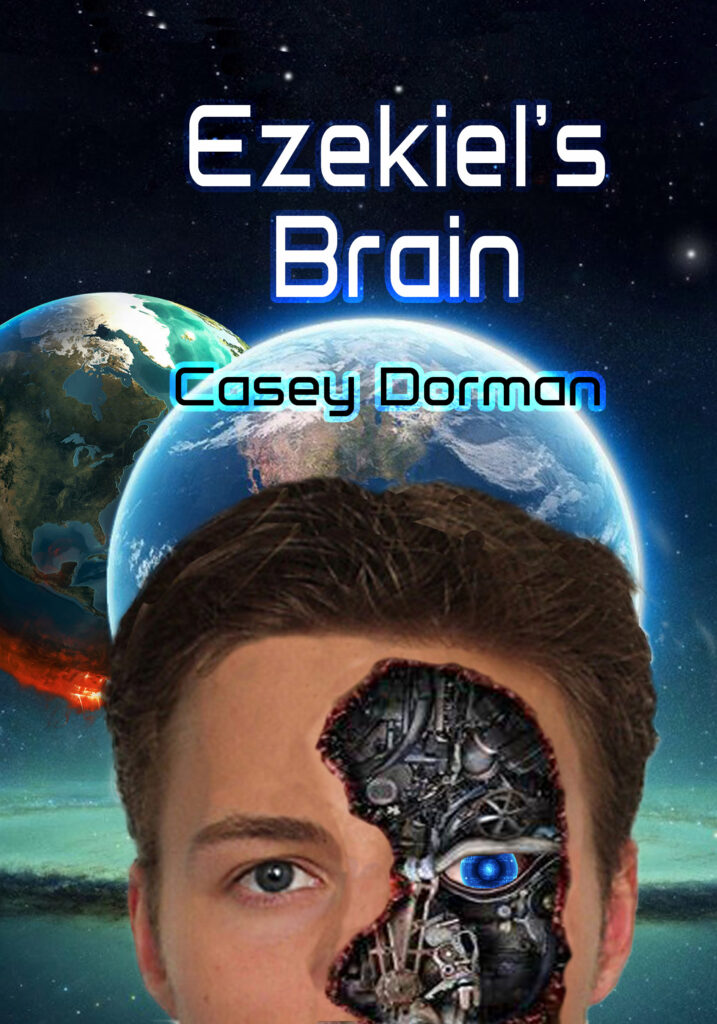In 2004, I wrote I, Carlos, a novel in which a new form of entertainment, called neurostories, involved implanting a computer chip inside the brain of a person, so they could experience a story as a participant, their sensory organs bypassed and the neural circuits to which they connected stimulated directly by impulses from the chip. In my novel, the result was disastrous. A skilled marksman and martial arts expert suffered a heart attack during a neurostory episode, and parts of his brain became damaged with the neurostory chip taking over and directing his thoughts and behavior. On the chip in his head was a modern day version of the film “The Day of the Jackal,” in which an assassin sets out to murder, not Charles DeGaulle, as in the original novel and film, but the President of the United States.
I, Carlos was imaginative in 2004, but less so today. New, though still experimental, devices such as Elon Musk’s Neuralink or other brain computer Interfaces called BCIs, and brain machine interfaces, or BMIs, have made neurostories and other applications of electronic components embedded in the brain possible. The first applications of such devices are mostly to aid in bringing function back to persons with spinal cord injuries. Thoughts can be translated into movements by using what Musk calls an electronic shunt that circumvents the severed region of the spinal cord, enervating the neurons at lower levels on the cord that carry messages to the muscles of the arms and legs. The person thinks about moving and his limbs follow his thoughts.
In one application, recently described in Scientific American, a team from Stanford University developed an implant that allows a person to think about drawing a letter, and electrodes implanted in his brain convey the messages to a computer whose cursor draws the letters, eventually forming words. This is a BCI, as the brain communicates directly with a computer.
One of the difficulties of using BCIs is the implant process. A company called Synchron has developed a device called Stentrode, which is a stent inserted through a vein in the neck and which then fans out electrodes that read neural signals through the walls of the vein. Their device can read movement thoughts and convey them via a computer, to a robotic arm that then carries out an action. The device is being tested with persons with spinal cord injuries.
Elon Musk’s neuralink can operate like the BCIs described above, but, in addition to interfacing with a computer, it can receive signals and relay them to the brain. As Musk says, it can be like having your iPhone inside your head, but you don’t need to physically text or speak your responses, just think them. The hope is that it can also substitute for damaged areas of the brain after strokes or as dementia is developing, conveying messages from one brain region to another. He also mentioned watching films in one’s head, which is eerily like the plot of I, Carlos.
The field of brain implants is moving faster than anyone would have thought 20 years ago, and faster than I thought when I wrote I, Carlos. In my latest novel, Ezekiel’s Brain, which begins in 2023, just two years from now, the main character, Ezekiel Job is a neuroscientist who specializes in brain implants and brain-computer interfaces. He uses the latest technology, which includes, neuroprosthetics, devices that, instead of being used to interface with a computer, actually replace damaged neural structures with artificial, electronic ones. Such are called bio-hybrids or biomimetic neurons or biomimetic neural circuits. They interface with real brain neurons but mimic natural circuits and sometimes even outperform them (an experimental biometic circuit mimicked the auditory neural circuits that allow barn owl to be skilled night hunters using only auditory cues. The artificial neural circuit outperformed the actual barn owl “by orders of magnitude”). From there it was only a hop skip and a jump to copying the circuitry of an entire brain—his own—this time by scanning himself and duplicating circuitry using a 3-D printer.
Ezekiel Job’s experiment didn’t backfire, as did the neurostories in I, Carlos, but the result, which was a computerized AI named Ezekiel with the same personality and memories as Ezekiel Job, turned out to outlive the human Ezekiel, and two-hundred years later finds himself amidst an entire civilization of AIs. That’s another story, but the underlying idea is that today’s BCIs, BMIs, biomimetic circuits, and neuroprosthetics are the beginning of what is almost for sure an inexorable march toward replacing our organic brains with electronic ones. First the bio-hybrid circuits, then the cyborgs and finally the androids with the AI brains. Ezekiel’s Brain.
Buy Ezekiel
Buy Ezekiel’s Brain on Amazon. CLICK HERE
Want to read more from Casey Dorman? Subscribe to his fan page to get regular updates on his writing and read his latest ideas. Subscribe here.






